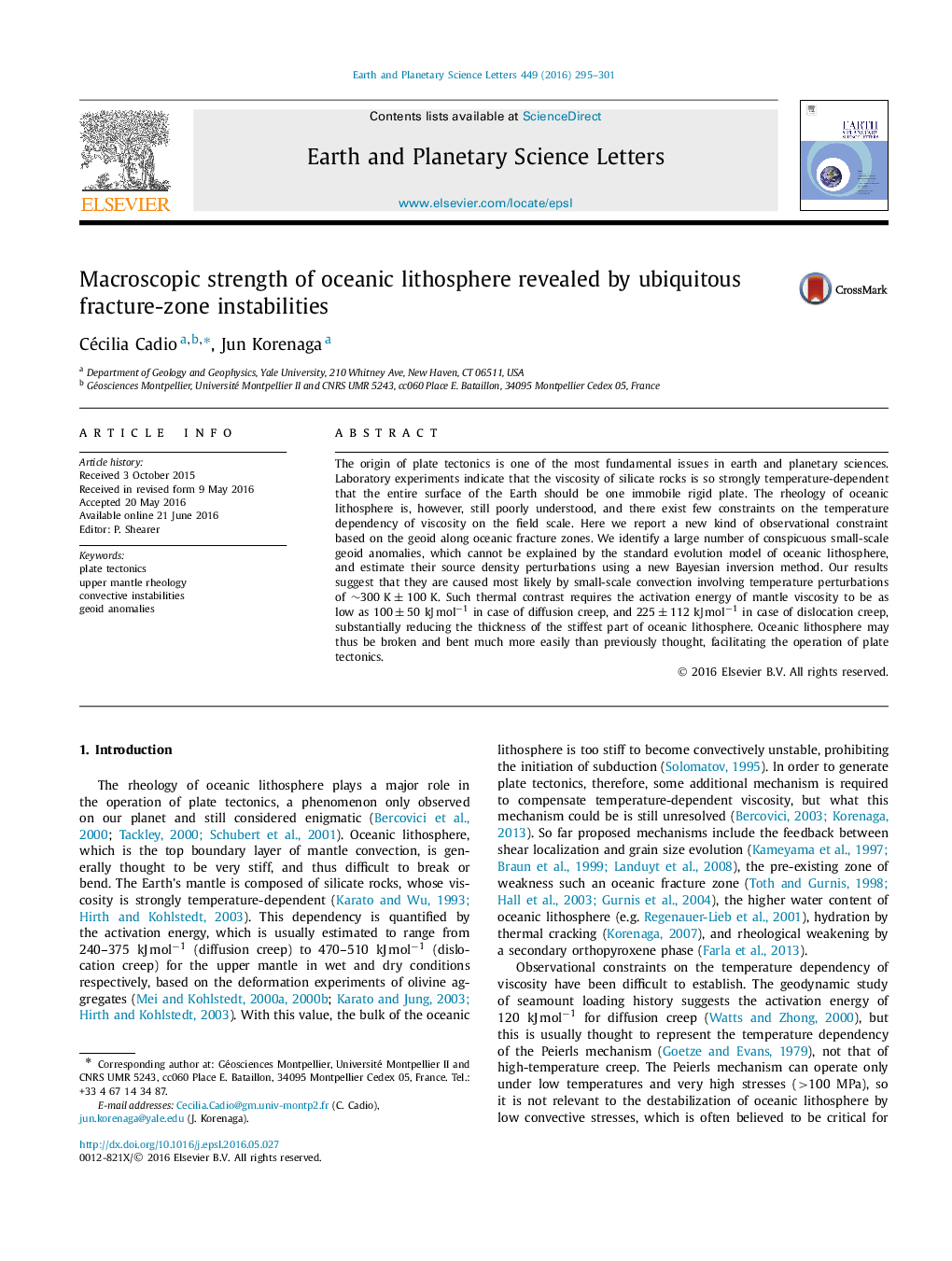| کد مقاله | کد نشریه | سال انتشار | مقاله انگلیسی | نسخه تمام متن |
|---|---|---|---|---|
| 6427398 | 1634707 | 2016 | 7 صفحه PDF | دانلود رایگان |
- A large number of conspicuous small-scale geoid anomalies along oceanic fracture zones.
- Activation energy of mantle viscosity may be as low as 225 kJâmolâ1 for dislocation creep.
- Oceanic lithosphere may be broken and bent much more easily than previously thought.
The origin of plate tectonics is one of the most fundamental issues in earth and planetary sciences. Laboratory experiments indicate that the viscosity of silicate rocks is so strongly temperature-dependent that the entire surface of the Earth should be one immobile rigid plate. The rheology of oceanic lithosphere is, however, still poorly understood, and there exist few constraints on the temperature dependency of viscosity on the field scale. Here we report a new kind of observational constraint based on the geoid along oceanic fracture zones. We identify a large number of conspicuous small-scale geoid anomalies, which cannot be explained by the standard evolution model of oceanic lithosphere, and estimate their source density perturbations using a new Bayesian inversion method. Our results suggest that they are caused most likely by small-scale convection involving temperature perturbations of â¼300 K±100 K. Such thermal contrast requires the activation energy of mantle viscosity to be as low as 100±50 kJmolâ1 in case of diffusion creep, and 225±112 kJmolâ1 in case of dislocation creep, substantially reducing the thickness of the stiffest part of oceanic lithosphere. Oceanic lithosphere may thus be broken and bent much more easily than previously thought, facilitating the operation of plate tectonics.
Journal: Earth and Planetary Science Letters - Volume 449, 1 September 2016, Pages 295-301
